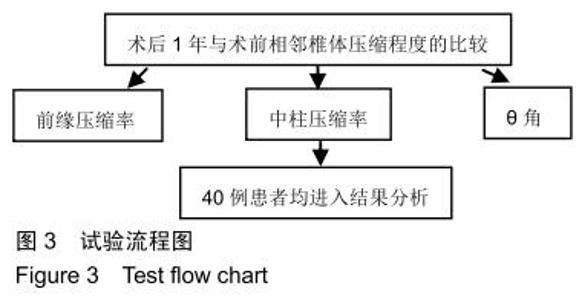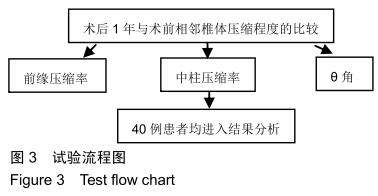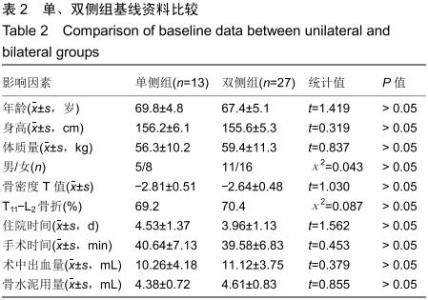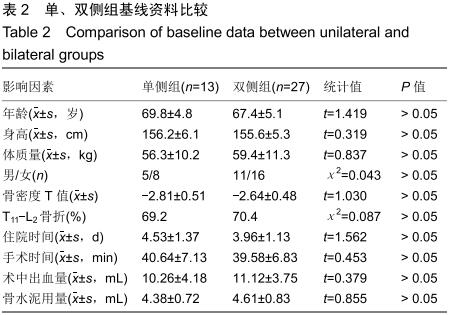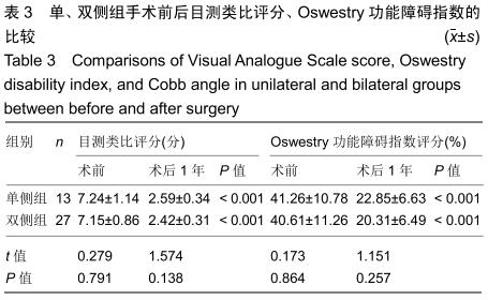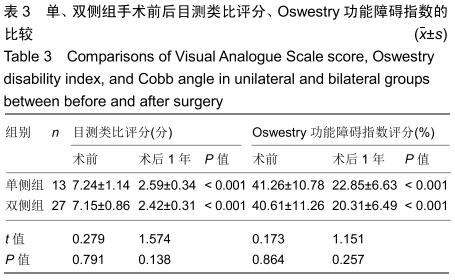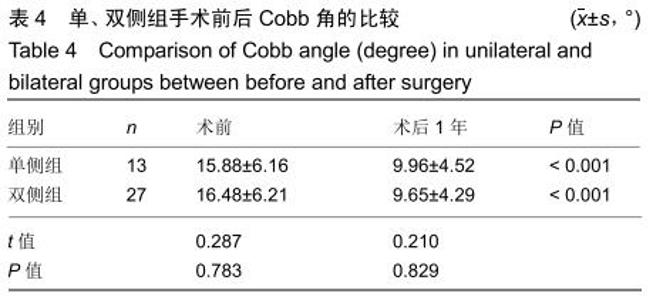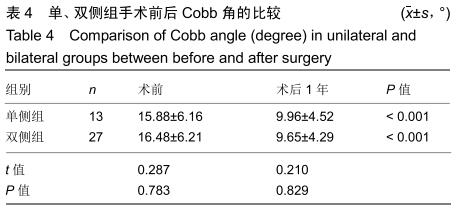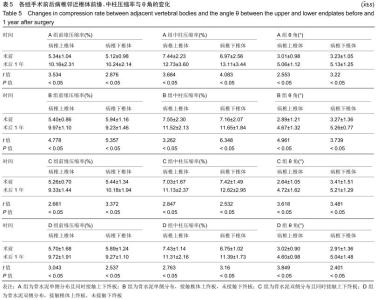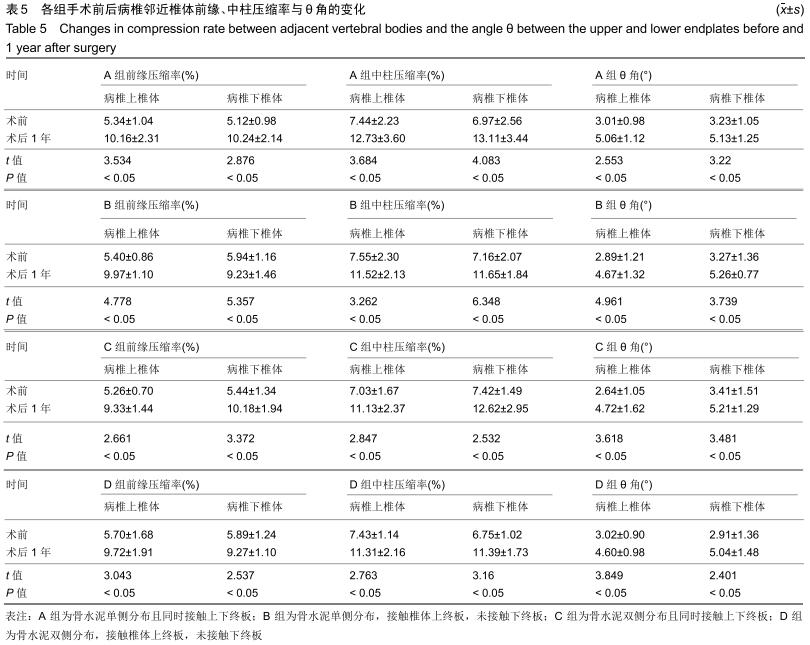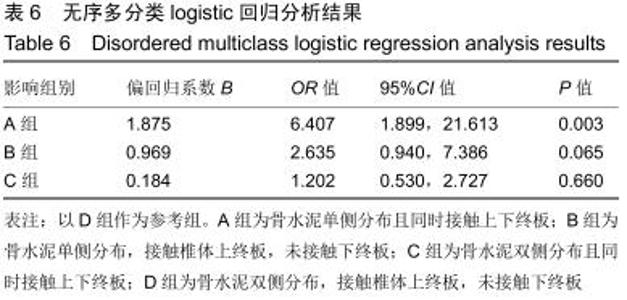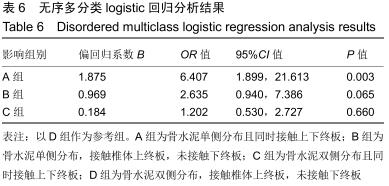|
[1] PLUIJM SM, TROMP AM, SMIT JH, et al. Consequences of vertebral deformities in older men and women.Bone Miner Res.2000;15:1564-1572.
[2] YUAN WH, HSU HC, LAI KL. Vertebroplasty and ballon kyphoplasty versus conservative treatment for osteoporotic vertebral compression fractures:a meta-analysis.Medicine.2016;95(31):e4491.
[3] MARTINEZ-FERRER A, BLASCO J, CARRASCO JL,et al. Risk factors for the development of vertebral fractures after percutaneous vertebroplasty.J Bone Miner Res.2013; 28:1821-1829.
[4] 张大鹏,毛克亚,强晓军.椎体增强术后骨水泥分布形态分型及其临床意义[J].中华创伤杂志,2018,34(2):130-137.
[5] LIN J, QIAN L, JIANG C, et al. Bone cement distribution is a potential predictor to the reconstructive effects of unilateral percutaneous kyphoplasty in OVCFs: a retrospective study.J Orthop Surg Res. 2018; 13(1):140.
[6] 蒋学国.骨水泥分布情况对PVP术后邻椎骨折影响的影响探讨[J].颈腰痛杂志,2019,40(2):204-207.
[7] UPPIN AA, HIRSCH JA, CENTENERA LV, et al. Occurrence of new vertebral body Fracture after percutaneous vertebroplasty in patients with osteoporosis.Radiology.2003;226:119-124.
[8] KOMEMUSHI A, TANIGAWA N, KARIYA S, et al. Percutaneous vertebroplasty for osteoporotic compression fracture: multivariate study of predictors of new vertebral body fracture. Cardiovasc Inter Rad.2006;29:580-585.
[9] GRADOS F, DEPRIESTER C, CAYROLLE G, et al. Long-term observations of vertebral osteoporotic fractures treated by percutaneous vertebroplasty.Rheumatology. 2000;39:1410-1414.
[10] KIM SH, KANG HS, CHOI JA. Risk factors of new compression fractures in adjacent vertebrae after percutaneous vertebroplasty.Acta Radiol.2004;45:440-445.
[11] 宋艳红,黄又明.椎体强化术后再发椎体骨折的临床特点和危险因素分析[J].临床与实践,2018,16(8):59-60.
[12] 谢建毅,石道敏,徐卫星,等.经皮椎体后凸成形术术后非伤椎再发骨折的相关危险因素分析[J].浙江医学,2018,40(12):1374-1377.
[13] KLAZEN CA, VENMANS A, DE VRIES J, et al. Percutaneous vertebroplasty is not a risk factor for new osteoporotic compression fractures:results from VERTOS Ⅱ.Am J Neuroradiol. 2010;31(8): 1447-1450.
[14] LEE KA, HONG SJ, LEE S, et al. Analysis of adjacent fracture after percutaneous vertebroplasty:does intradiscal cement leakage really increase the risk of adjacent vertebral fracture?Skeletal Radiol. 2011; 42(12):1537-1542.
[15] BAUMANN C, FUCHS H, KIWIT J, et al. Complications in percutaneous vertebroplasty associated with puncture or cement leakage. Cardiovasc Intervent Radiol.2007;30(2):161-168.
[16] ATSUSHI K, NOBORU T, SHUJI K, et al. Percutaneous Vertebroplasty for Osteoporotic Compression Fracture: Multivariate Study of Predictors of New Vertebral Body Fracture.Cardiovasc Intervent Radiol. 2006;29(4):580-585.
[17] 李业成,张巍,刘守正,等.PVP术后骨水泥渗漏方向与相邻椎体骨折的相关性分析[J].中国骨与关节损伤杂志,2018,33(1):53-54.
[18] BORENSZTEIN M, CAMINO W, POSADAS M, et al. Analysis of Risk Factors for New Vertebral Fracture After Percutaneous Vertebroplasty. Global Spine J.2018;8(5):446-452.
[19] FU Z, HU X, WU Y, et al. Is There a Dose-Response Relationship of Cement Volume With Cement Leakage and Pain Relief After Vertebroplasty?Dose Response.2016;14(4):1559325816682867.
[20] GUO Z, WANG W, GAO WS, et al. Comparison the clinical outcomes and complications of high-viscosity versus low-viscosity in osteoporotic vertebral compression fractures.Medicine.2017;96(48):e8936.
[21] ZENG T, WANG Y, YANG X, et al. The clinical comparative study on high and low viscosity bone cement application in vertebroplasty.Int J Clin Exp Med.2015;8(10):18855-18860.
[22] SARACEN A, KOTWICA Z. Treatment of multiple osteoporotic vertebral compression fractures by percutaneous cement augmentation. Int Orthop.2014;38:2309-2312.
[23] LI H, YANG D, MA L, et al. Risk Factors Associated with Adjacent Vertebral Compression Fracture Following Percutaneous Vertebroplasty After Menopause: A Retrospective Study.Med Sci Monit. 2017;23:5271-5276.
[24] KARMAKAR A, ACHARYA S, BISWAS D, et al. Evaluation of Percutaneous Vertebroplasty for Management of Symptomatic Osteoporotic Compression Fracture.J Clin Diagn Res. 2017;11(8): RC07-RC10.
[25] ROHLMANN A, POHL D, BENDER A, et al. Activities of everyday life with high spinal loads.PLoS One.2014;9(5):1-10.
[26] VANDENPUT L, MELLSTROM D, KINDMARK A, et al. High serum SHBG predicts incident vertebral fractures in elderly men.J bon Miner Res.2016;31(3):683-689.
[27] SHEN JM, FENG L, CHEN J, et al. Risk fators of new vertebral fracture PKP in patients with OVCF.J Clin Med.2017;19(5):806-808.
[28] HE X, LI H, MENG Y, et al. Percutaneous Kyphoplasty Evaluated by Cement Volume and Distribution: An Analysis of Clinical Data.Pain Physician.2016;19(7):495-506.
[29] 史东,刘春新,何飞,等.胸腰段骨质疏松性椎体压缩性骨折骨水泥分布对临床疗效的影响[J].农垦医学,2018,40(5):414-417.
[30] YANG S, CHEN C, WANG H, et al. A systematic review of unilateral versus bilateral percutaneous vertebroplasty/percutaneous kyphoplasty for osteoporotic vertebral compression fractures.Acta Orthop Traumatol Turc.2017;51(4):290-297.
[31] MARTINCIC D, BROJAN M, KOSEL F, et al. Minimum cement volume for vertebroplasty.Int Orthop. 2015; 39:727-733.
[32] NIEUWENHUIJSE MJ, BOLLEN L, VAN ERKEL AR, et al. Optimal intravertebral cement volume in percutaneous vertebroplasty for painful osteoporotic vertebral compression fractures.Spine (Phila Pa 1976).2012; 37:1747-1755.
[33] ZHANG L, WANG Q, WANG L, et al. Bone cement distribution in the vertebral body affects chances of recompression after percutaneous vertebroplasty treatment in elderly patients with osteoporotic vertebral compression fractures.Clin Interv Aging. 2017;12:431-436.
[34] BELKOFF SM, MATHIS JM, JASPER LE, et al. The biomechanics of vertebroplasty. The effect of cement volume on mechanical behavior. Spine. 2001;26(14):1537-1541.
[35] CHEN B, LI Y, XIE D, et al. Comparison of unipedicular and bipedicular kyphoplasty on the stiffness and biomechanical balance of compression fractured vertebrae.Eur Spine J. 2011;20(8):1272-1280.
[36] 范新成,张伟,朱海涛,等.椎体成形改进装置对骨质疏松性椎体压缩骨折模型的生物力学分析[J].中国矫形外科杂志,2017,25(18):1685-1689.
[37] 赵云芳,滕范文,香淑媚.PVP术后对邻近节段椎体生物力学影响的有限元分析[J].齐齐哈尔医学院学报,2015,36(20):2980-2981.
[38] POLIKEI A, NOLTE LP, FERGUSON SJ. The effect of cement augmentation on the load transfer in an osteoporotic functional spinal unit: finite-element analysis.Spine(Phila Pa 1976).2003;28:991-996.
[39] HULME PA, BOYD SK, HEINI PF, et al. Differences in endplate deformation of the adjacent and augmented vertebra following cement augmentation.Eur Spine J.2009; 18: 614-623.
[40] OKA M, MATSUSAKO M, KOBAYASHI N, et al. Intra-vertebral cleft sign on fat-suppressed contrast-enhanced MR: correla-tion with cement distribution pattern on percutaneous vertebroplasty.Acad Radiol. 2005;12(8):992-999.
|
